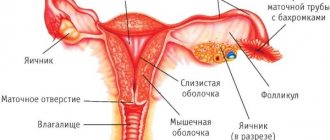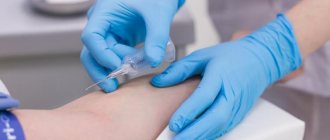When a woman has completely checked her health, and no obvious abnormalities are found, the long-awaited pregnancy may still not occur. The most common cause of this is obstruction of the fallopian tubes, otherwise known as fallopian tubes. They are responsible for delivering the fertilized egg to the uterine cavity, where the embryo is supposed to develop further. If there is obstruction, then pregnancy does not occur.
Currently, the presence of such a deviation can be checked without much difficulty in any clinic. How do you check the patency of pipes? There are several methods. This is completely harmless and can probably help solve many problems, because after the diagnosis is established, the pathology can be treated.
The need for verification
In their anatomical structure, the uterine appendages in women are nothing more than two hollow tubes. But they perform the most important function of connecting the main reproductive organ and the ovaries. An interesting fact is that the organs have a fairly small diameter: from 0.1 mm to 1 cm. The lower limit of the diameter is comparable in size to a human hair. But even such small sizes do not cause the impossibility of conception.
For its subsequent development and formation of an embryo, a fertilized egg must pass through the tube to the uterus and become fixed in it. The process of conception itself occurs in the fallopian tubes.
If, while passing through the tube, the female reproductive cell encounters obstacles, then fertilization does not occur, and therefore pregnancy does not occur.
Obstruction of the fallopian tubes is most often associated with the following most common reasons:
- Inflammatory processes in the tubes themselves or any pelvic organ. The culprits of the pathology can be both bacterial and viral and fungal infections.
- Obstruction occurs after various operations in the abdominal cavity, which served as an impetus for the formation of adhesive disease, which did not go away without a trace.
- Unsuccessfully completed pregnancy terminations can also create preconditions for tubal obstruction.
A tubal patency test is recommended for women whose attempts to conceive have not been successful for more than six months. The patient can choose from several modern innovative techniques, including various minimally invasive techniques, MRI and other studies.
Pregnancy after laparoscopy
After laparoscopy, you can get pregnant within a few months, but immediately after the operation you need to completely abstain from sexual intercourse for 2-3 weeks. After this, you can plan to conceive. Pregnancy after laparoscopy is quite possible in the near future.
Women who become pregnant after laparoscopy within several months are observed by a gynecologist. Often pregnancy is accompanied by drug treatment; the woman takes medications to support the normal hormonal levels of pregnancy. If pregnancy does not occur after laparoscopy, this operation can be repeated several times.
Diagnostic methods
How to check the patency of the fallopian tubes is something that women who are faced with a possible pathology of these organs wonder about. Invagination of a section of a tube, chord or overlap in an organ can interfere with the natural process of conception.
Diagnosis of fallopian tube patency is carried out using:
- hysterosalpingography;
- diagnostic laparoscopy;
- MRI;
- hydrosonography;
- fertiloscopy;
- pertrubation.
Each of them has its own advantages and disadvantages that should be considered in relation to every woman.
Drug treatment
If obstruction of the oviduct is caused by an inflammatory process, then treatment should be started immediately. Advanced stages of inflammation are accompanied by changes in the structure of the mucous membrane and then the drug method will be ineffective.
Conservative treatment is carried out using the following groups of drugs.
- Anti-inflammatory: phenylbutazole and cortisone, diclofenac, indomethacin or aspirin. The drugs are used in the form of suppositories or tablets. In addition to the anti-inflammatory effect, they have antipyretic and analgesic properties.
- Antibacterial: gentamicin or kanamycin, chloramphenicol, metronidazole or tetracycline. The drugs are effective in the fight against microorganisms (if the obstruction was caused by their activity).
- Hormonal drugs are prescribed for vascular and trophic disorders provoked by inflammatory processes.
- Sedatives in the form of vitamins, calcium and immunotherapy stimulate the immune system.
The selection of drugs, their dosage and duration of use is carried out by a surgeon or gynecologist. Throughout the course, the patient visits the attending physician, who determines the effectiveness and makes adjustments to the prescription as needed.
Conservative treatment is recommended to be combined with physiotherapy:
- Balneotherapy;
- Ultrasound therapy;
- Electrophoresis using magnesium, calcium and biogenic stimulants;
- Gynecological massages;
- Electrical stimulation of the pelvis.
If drug therapy does not have an effect, a decision is made on surgical intervention.
Surgical methods
Surgical intervention can solve problems with mechanical closure of the lumen in the fallopian tubes. Main directions in surgery:
- The laparoscopic method is most often used. The operation is performed through small openings in the abdomen, through the anus, or through the vagina. If complications or new data about the disease appear during the procedure, the course of the operation may change, and the doctor decides to use the laparotomy method.
- The laparotomy method is performed by dissecting the abdominal wall. More often used to remove tumors. In the absence of postoperative complications, the woman is discharged from the hospital on the 5th day.
- The reconstructive method involves the use of synthetic materials, thanks to which we expand the lumen in the pipes.
Important: Sometimes surgery can greatly harm a woman’s overall health. The doctor can only recommend one of the treatment methods, and the woman must decide for herself how appropriate it is for her.
Modern medicine offers a fairly large selection of methods to cure tubal patency. With successful treatment, a woman can become pregnant within the first year. But the problem may arise in the future. The pathology of tubal obstruction can recur. There are also cases when the problem is solved and the egg is successfully fertilized, but its transportation to the uterine cavity does not take place. For a woman, this ends in an ectopic pregnancy and emergency surgery.
Minimally invasive methods
Hysterosalpingography
Hysterosalpingography is based on an examination method using X-rays. The condition of the fallopian tubes is checked using additional procedures. The event is carried out by two doctors at once, between whom responsibilities are divided. The gynecologist inserts a catheter into the uterine cavity, through which contrast is supplied. The radiologist assesses the spread of this substance through the tubes into the abdominal cavity.
There are some contraindications for hysterosalpingography:
- current pregnancy;
- allergy to iodine, which is contained in the radiocontrast agent;
- gynecological inflammatory diseases;
- common viral and bacterial infections.
In general, metrosalpingography (the second name of the method) does not require significant preparation on the part of the woman and does not cause unpleasant or painful sensations. It allows you to accurately determine the obstruction of the fallopian tubes, since it is clearly visible on an x-ray even to a person who is not related to medicine. You can consult any doctor with an x-ray. The only thing is that doctors do not recommend planning a pregnancy for a woman who was examined the day before.
Hydrosonography
Ultrasound examination for tubal patency is hydrosonography. The diagnostic method allows you to avoid X-ray radiation when it is undesirable even in minimal doses and an ultrasound can be done as an alternative. It is carried out in the absence of inflammatory lesions of the genital organs and active bleeding.
The opening of the cervical canal most fully occurs on the 10th day of the menstrual cycle - the time most suitable for this analysis of tubal patency. The actions performed by the doctor during the examination are similar to the previous method. A saline solution is injected into the uterine cavity, the distribution of which is determined by an ultrasound beam. In the interpretation of results obtained from ultrasound, the percentage of error has increased. GEL (hydro-echolocation) is a subtype of this type of research.
Pertrubation
Checking the patency of the fallopian tubes is also carried out using pertrusion. Signs of organ blockage are detected by introducing carbon dioxide into the uterine cavity. A certain device measures the pressure in the pipes, which has an increased value in the case of true obstruction. If the organs are functioning well, vibration is felt in the abdominal cavity, and a noise may be heard corresponding to the passage of gas.
This examination is not carried out for infectious processes and bleeding in the uterus. There is a small risk of tubal rupture during the test if done by inexperienced doctors.
MRI
One of the non-invasive methods for checking for obstruction of the fallopian tubes is also magnetic resonance imaging. MRI is the most informative and safe examination method, which cannot be compared with echoscopy or metrosalpingography. MRI is distinguished by its high cost if it is performed for diagnostic purposes and not for health reasons.
Collection of herbs for tubal obstruction
A tablespoon of the mixture will require a glass of boiling water. The medicine must be infused for 6 hours, then passed through a sieve. Directions for use: 3 times a day, 1/3 cup 60 minutes before meals.
You need to be treated with this remedy for a month, then take a break for 14 days and repeat the course (if necessary).
It is imperative to supplement the treatment with burdock juice. It must be used according to the scheme described above under number 1.
Surgical methods
When determining how to check the patency of the fallopian tubes, they often resort to surgical interventions.
Laparoscopy
Diagnostic laparoscopy allows you to detect that the fallopian tubes are obstructed and proceed to directly correct this problem.
The laparoscopic method is a surgical procedure performed through punctures in the abdominal cavity. The doctor examines the internal organs using optical instruments that transmit images to the screen.
Preparation for this type of research is the most thorough:
- the woman undergoes a full range of tests;
- checks the functionality of the heart.
Laparoscopy of the fallopian tubes is performed under general anesthesia, so the patient should not have problems with the cardiovascular system and hemostasis.
Fertiloscopy
This is a slightly simplified version of surgery.
It is carried out using intravenous anesthesia or even under local anesthesia. Proven optical devices are installed in the posterior vaginal fornix. A saline solution is supplied to the pelvis, from which the uterine appendages straighten and make it possible to detect the alleged defect. If the pathology of the tube is not determined, it is possible to examine the organs for other causes of female infertility. At home, a woman should begin preparing for the procedure:
- eat foods that do not cause gas;
- drink more fluids.
It is better to establish obstruction of the fallopian tubes using fertiloscopy in the first phase of the menstrual cycle after direct bleeding.
Wintergreen is a minor remedy for tubal obstruction.
The diagnosis of infertility sounds like a death sentence for a woman. Statistics indicate that in recent years there have been more and more couples who cannot conceive a child naturally. Of course, infertility occurred before, in those days when there were a lot of children in the family. It is from that time that there has been a rumor about the royal carnation. It was this remedy that helped many women find the happiness of motherhood.
There are certain indications for the use of this herb, including:
- Infertility in a woman.
- Miscarriages.
- Menstrual irregularities.
- Inflammatory processes in the fallopian tubes.
- Lack of ovulation.
- Intermenstrual uterine bleeding.
- Weakness of the uterine muscles.
- Impaired spermatogenesis in men, which leads to infertility.
The problem of infertility has been under the close attention of doctors at all times, and today it has been thoroughly studied. That is why it is recommended to use not only mother cloves, but to include it in various medicinal complexes consisting of other plants.
The following herbal preparations should be taken into account to eliminate certain problems with the reproductive system:
- Plantain seeds, uterine cloves – treatment of infertility of unknown etiology.
- Uterine carnation boron uterus red brush - treatment of irregular cycles.
- Royal carnation plantain seeds boron uterus red brush linden blossom elecampane root – lack of ovulation.
- Mother clove wintergreen anise plantain seeds – inflammatory processes of the fallopian tubes.
- Femoral saxifrage – previous miscarriages.
- Dianthus carnation rose petals calendula chamomile horsetail wormwood valerian agrimony dill rose hips plantain St. John's wort wheatgrass yarrow nettle midge - with prolapse of the uterus. Treatment should be supplemented with douching from an infusion of Datura vulgaris herb.
Of course, cloves are a useful plant for treating not only infertility, but also other disorders in the reproductive system. It is also successfully used to prevent alopecia, to get rid of helminthic infestations, and to treat headaches, including migraines. The plant helps with dislocated joints, bronchitis, fainting, epilepsy, trachoma.
The properties of the plant are varied, including:
- Reducing or eliminating pain.
- Providing a diaphoretic effect.
- Relieving inflammation.
- Stop bleeding.
- Elimination of seizures.
- Weak stimulating effect.
However, it should be noted that not all categories of people can use royal cloves.
This drug has a number of contraindications, including:
- Hypotension. The fact is that cloves can lower blood pressure, so during treatment you need to supplement the complexes with Rhodiola rosea.
- Pregnancy. If during a course of treatment with cloves a woman discovers that she is pregnant, then the course should be stopped.
The recipe for preparing a decoction of the plant is very simple: you need to pour two tablespoons of the herb in dry form with a glass of boiling water, leave for 20 minutes and strain. You should take the infusion no more than 4 times a day, 1-2 tablespoons.
If a woman decides to be treated with clove tincture, then 90 drops per day, divided into three times, will be enough. Take the drug half an hour before meals.
Royal carnation is a very powerful plant that allows you to conceive a child in the shortest possible time. It often happens that a woman does not even have time to complete the treatment course before she finds out about her situation.
Not only plantain seed has healing properties, but also other parts of the plant: roots and leaves. They are actively used to treat the digestive, respiratory and endocrine systems.
The medicinal properties of the plant are due to its unique chemical composition, which contains many vitamins and mineral salts. They have a beneficial effect on the hormonal balance of the body. Our grandmothers knew about these properties of the plant, so they actively used plantain to treat female infertility.
Beneficial properties of plantain seeds for the female population:
- Elimination of inflammation in the uterine appendages.
- Reducing pain during menstrual bleeding.
- Treatment of adhesions in the pelvis.
As for men, a decoction of plantain seeds should be taken by those representatives of the stronger sex who have impaired sperm motility.
It is important to understand that the plant is not able to provide a lightning-fast healing effect. You will need to take it over a long period of time. As practice shows, pregnancy occurs 3-5 months after the start of treatment.
An important feature of plantain decoction is that it can be taken regardless of the phase of the menstrual cycle. Moreover, it allows you to make bleeding less profuse.
It should be noted that, like any other medicine, plantain decoction has a number of contraindications, including:
- Asthma, as there is a risk of developing an allergic reaction.
- Increased acidity of gastric juice.
- Intestinal diseases.
- Blood clotting disorders.
- Venous thrombosis.
- Diseases of the heart and blood vessels.
A recipe for preparing plantain decoction for the treatment of male and female infertility: in a water bath you need to heat a glass of water with the addition of a tablespoon of plant seeds. Then you need to soak the broth for half an hour and strain.
Method of administration: 2 tablespoons 4 times a day before meals. For men, the recipe for preparing the decoction does not change, but you will need to take it one tablespoon three times a day. To get rid of existing problems, you need to undergo a full course of treatment, which lasts 60 days. When a man takes a decoction in a dosage of 2 tablespoons 4 times a day, it helps to increase sperm motility.
Wintergreen is actively used to eliminate inflammatory processes that lead to infertility. The plant can be used by both men and women. The use of wintergreen in men can eliminate inflammation of the prostate and normalize the functioning of the urethra. For women, wintergreen helps get rid of adnexitis, colpitis, gonorrhea, vaginitis, and regulate the tone of the uterine muscles.
Recipes for preparing medicines with wintergreen:
- Pour a tablespoon of the plant into a glass of boiling water and leave in a steam bath for about 45 minutes. The resulting decoction should be cooled, its volume brought to 250 ml by adding boiled water. Take 1/3 cup 3 times a day before meals.
- To prepare the tincture, you need to pour 1/4 cup of wintergreen with 200 ml of vodka and leave for 3 weeks. All this time the tincture should stand in a warm place. It must be strained before use. Take 3 times a day, before the next meal, 35 drops.
- Another recipe for the tincture is as follows: pour vodka in a volume of 500 ml into two packs of the plant and keep it in a warm place. The container will need to be shaken periodically. After 18 days, filter the tincture and take 25 drops before meals.
As for the duration of treatment, the course can last from 3 months to six months.
Burdock juice is an effective remedy for the treatment of obstruction of the fallopian tubes, which provokes infertility. This product has a number of useful properties, including:
- Reducing inflammation;
- Destruction of bacteria;
- Providing an antitumor effect;
- Providing a choleretic and diuretic effect;
- Increased sweating;
- Providing an antioxidant effect on the body;
- Reducing the severity of allergies, etc.
Traditional medicine widely uses burdock juice not only to treat infertility, but also to treat inflammation of the respiratory system, to accelerate the healing of burns, to reduce acne and boils. It is prescribed for diabetes, gastritis, liver diseases, cysts, uterine fibroids, etc.
Method for preparing burdock juice. To prepare an effective remedy, you need to select the leaves of a young plant. They need to be cut off along with the petioles. Collection should begin in May and continue until the end of June. Moreover, you should choose places that are located away from highways, factories, etc.
Of course, summer leaves of the plant can be used to prepare juice, but they contain less vitamins and microelements than the spring “harvest”.
The leaves should be thoroughly washed with running water and soaked in cool water for at least 2 hours. Then they are dried and passed through a meat grinder. The resulting pulp is spread on cheesecloth and the juice is squeezed out of it. It is stored in the refrigerator for 3 days, but no longer.
Storing burdock juice. It is necessary to take into account that after 2 days all useful substances begin to disappear from the medicine. Of course, it is best to be treated with fresh juice, but in order to be able to carry out therapy out of season, you can “preserve” the juice. To do this you need to use alcohol or vodka. The juice is mixed with vodka in equal proportions. If alcohol is used for preservation, then per liter of juice you will need 200 ml of 96 degree alcohol.
The resulting solution should be stored in the refrigerator. Its shelf life is 12 months.
Burdock juice intake regimen No. 1:
- From 1 to 2 days: a teaspoon of juice 2 times a day.
- From 3 to 4 days: a teaspoon of juice 3 times a day on days 3 to 4.
- From 5 to 30 days: a tablespoon of juice 3 times a day from 5 to 30 days.
When the monthly course is completed, you will need to take a break for 30 days, and then you can repeat it.
Burdock juice intake regimen No. 2. It is taken 3 times a day, 1 or 2 tablespoons for a week, then take a break of 7 days and repeat the dosage regimen. Using this method, burdock juice can be taken for a month.
How do they do it?
Hysterosalpingoscopy is performed in one of two ways: externally (through the abdominal wall) or transvaginally (by inserting a sensor into the vagina).
Progress of the procedure:
- The back of the gynecological chair is lowered, and the woman takes a lying position on it.
- Then a thorough treatment of the cervix and vagina is performed.
- A disposable small-diameter catheter with a balloon at the end is inserted through the neck, which is necessary for fixation.
- Using an ultrasound, the doctor makes sure that the catheter is positioned correctly (a vaginal sensor is used for the procedure).
- A saline solution or a special gel is injected into a woman’s body, which, as it moves through the fallopian tubes, makes it possible to examine their structure (its amount varies from 20-40 ml to 100-110 ml). The procedure allows not only to determine the presence of adhesions, but also to identify inflammation.
The study is carried out on an outpatient basis, and the patient does not need to stay in the hospital after its completion.
Video 1. Ultrasound of the fallopian tubes.
In terms of time, the GSS takes from 10 minutes to half an hour.
Advantages and disadvantages of UZGSS
Like any diagnostic procedure, examination of the fallopian tubes has positive and negative aspects, related both to the patient’s comfort during the ultrasound and to its information content.
Minuses
The UZGSS procedure has a number of disadvantages:
- due to spasmodic compression of the uterus and tubes or a large volume of injected fluid, the patient may feel discomfort;
- The cause of obstruction of the gel or saline solution can be not only adhesions, but also severe spasms.
pros
This diagnostic study has clear advantages over other methods for determining tubal obstruction:
- When planning a pregnancy, conception is possible in the same cycle, because unlike X-ray examination, GSS does not lead to irradiation of the genital organs. Therefore, the question “which is better - X-ray or ultrasound examination” does not arise here.
- In some cases, the procedure is a stimulus for the onset of gestation , since the contrast liquid leads to the washing away of the derivative that clogs the tubes. It also separates thin adhesions and activates the work of the fimbria, which captures and promotes the egg.
- The patient does not require hospitalization or a long wait for diagnosis.
- The procedure will not take much time .
- At the same time, it allows us to identify pathologies of the uterus.
- It is performed non-invasively, that is, without punctures of the abdominal skin.
- Painlessness allows you not to resort to anesthesia for ultrasound examination.










